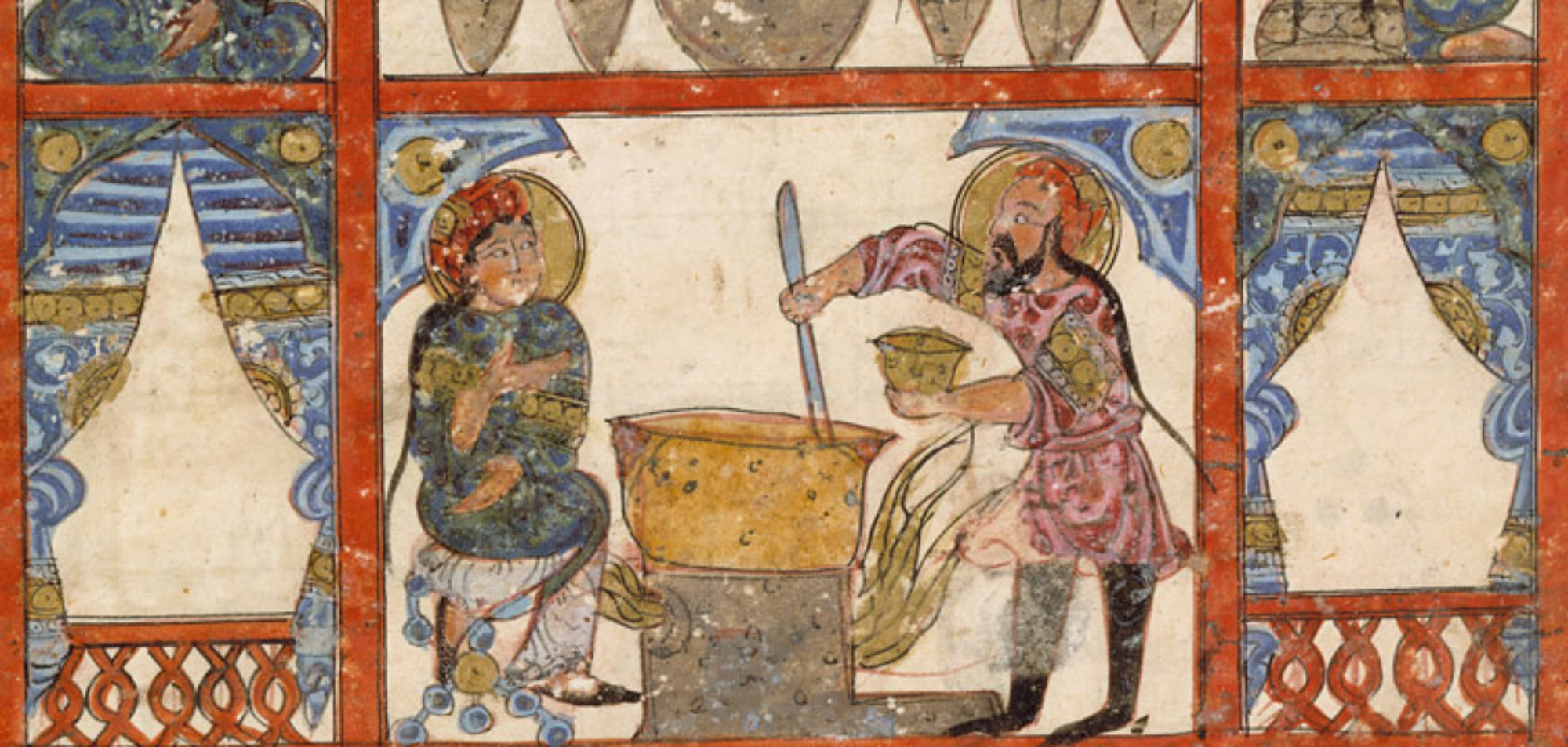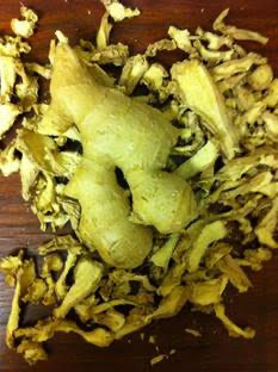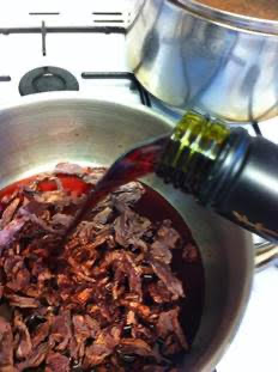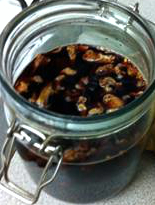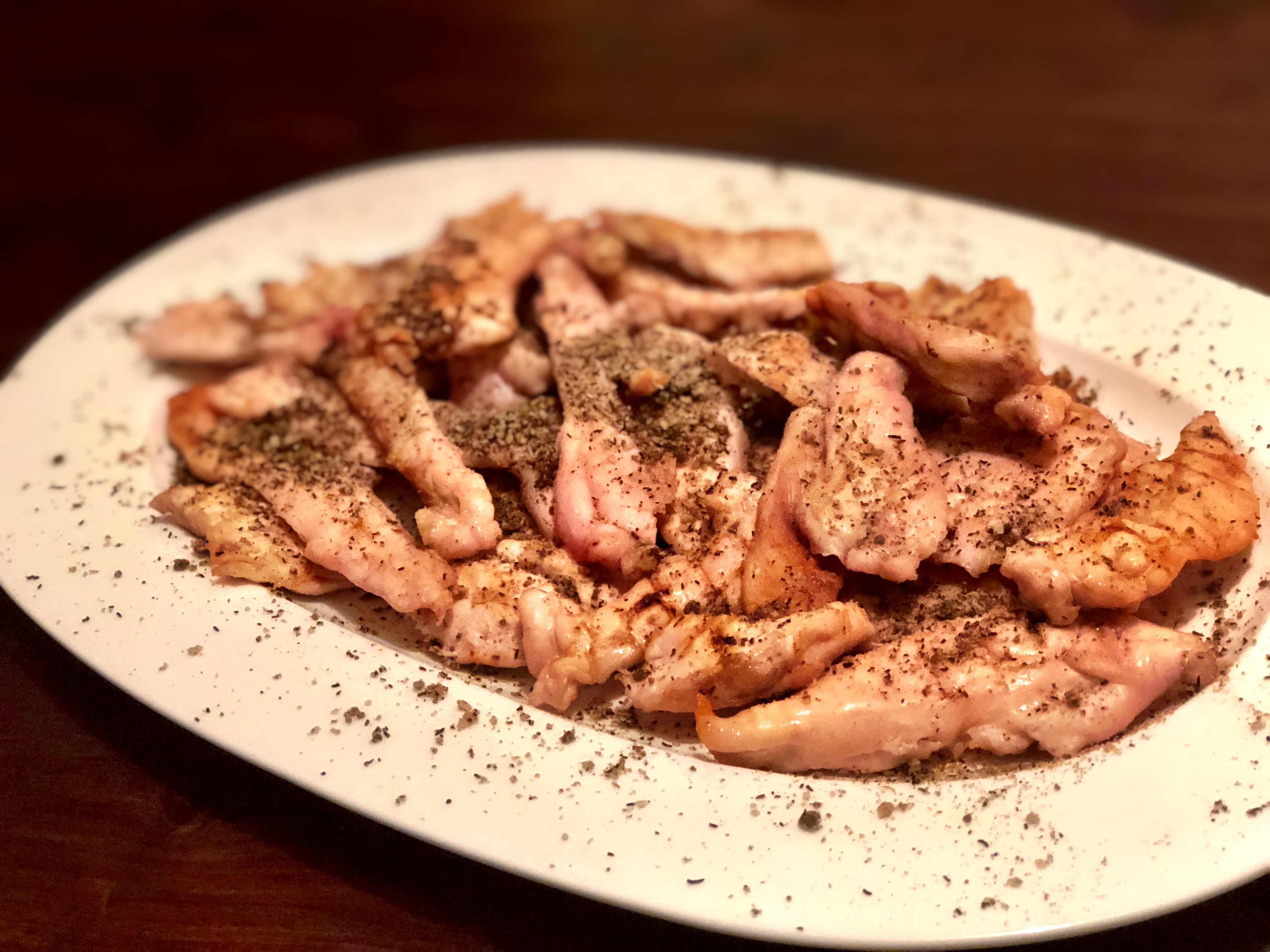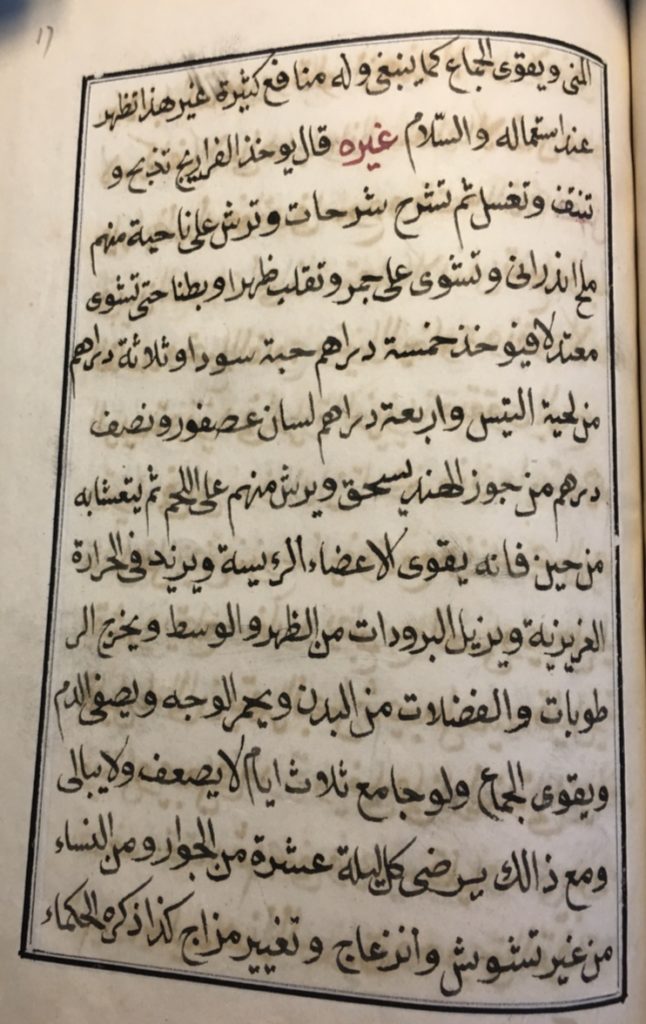This recipe from 10th-century Iraq was recommended for people with cold temperaments. It is not difficult to make and can be enjoyed by itself as a sweet. It is very unusual in that it is one of the rare mediaeval recipes requiring wine, in which to soak the ginger. Afterwards, the ginger is cooked with saffron and honey before adding various spices (e.g. saffron, spikenard, black cardamom and pepper). Although the author suggested storing it for a few months, it tastes quite nice already a few days later!
Shrimp samosas (سَنْبُوسَج, sanbūsaj)
A wonderful 10th-century Baghdadi recipe made with a filling of shrimp, taro root, onion and spices stuffed inside thin sheets of bread fried in olive oil. Complement with soya sauce on the side for dipping. A great snack, or light lunch or dinner!
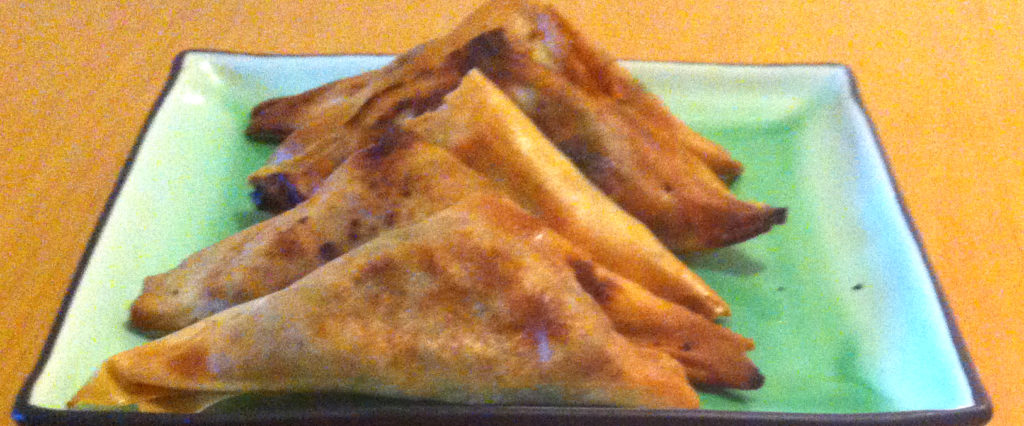
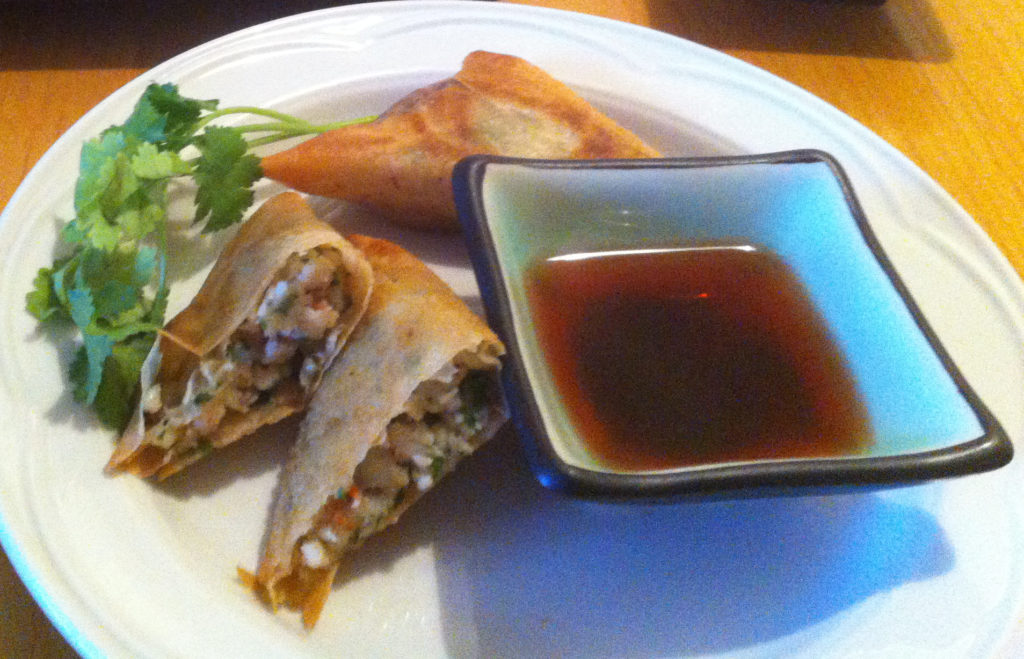
Virgin’s breasts (نُهُود العَذْراء, nuhud al-‘adhra)
These scrumptious biscuits are extremely easy to make. Clarified butter (ghee), almond and wheat flour, and sugar are kneaded into a dough, which is then shaped into breasts before baking. Serve with some mint tea on a lazy weekend afternoon — or any other time for that matter! [Wasf al-at’ima, Ṣināʿa 52, p. 229].
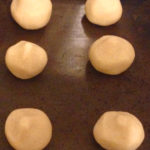
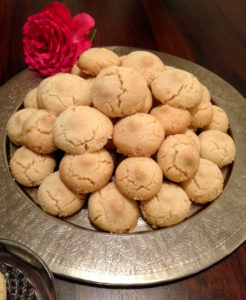
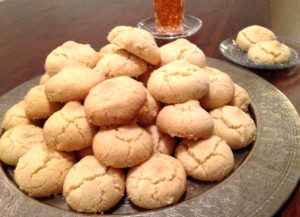
Fried fish with preserved lemon
This recipe from 15th-century Egypt requires coating fish with coriander, caraway and flour before frying it in a pan. The sauce, which is cooked separately, is made with the following ingredients: carrots, sumac, coriander, thyme, garlic, pepper, chopped up salted lemons, and celery. [Ibn Mubārak Shāh, fol. 18r.]
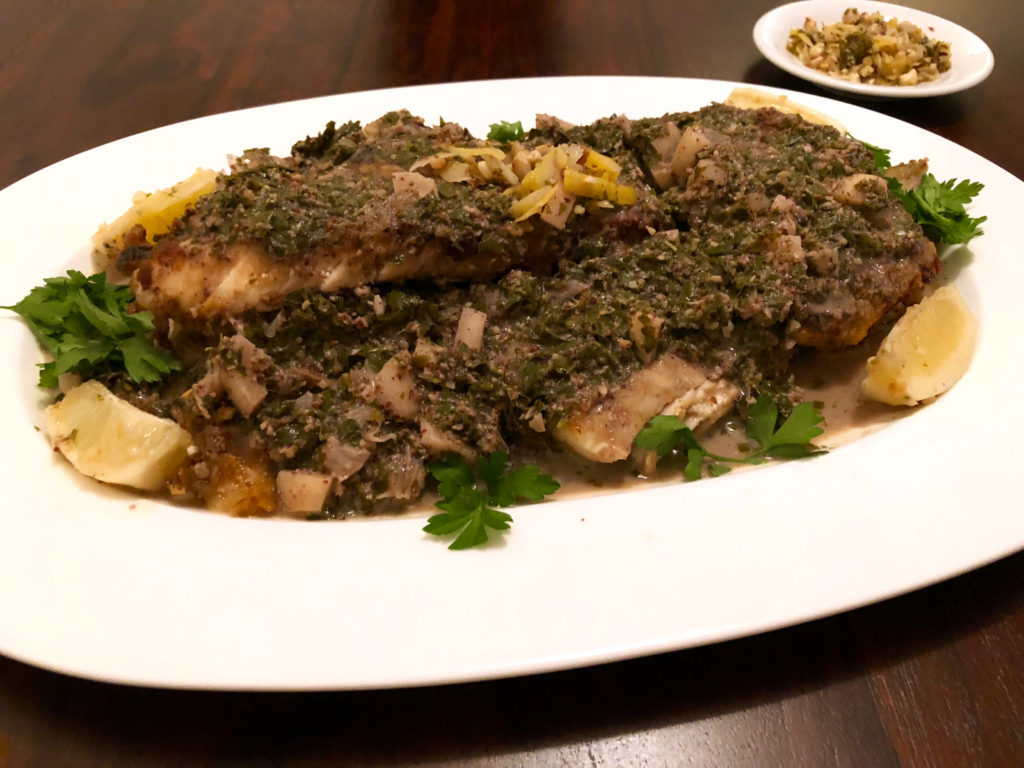
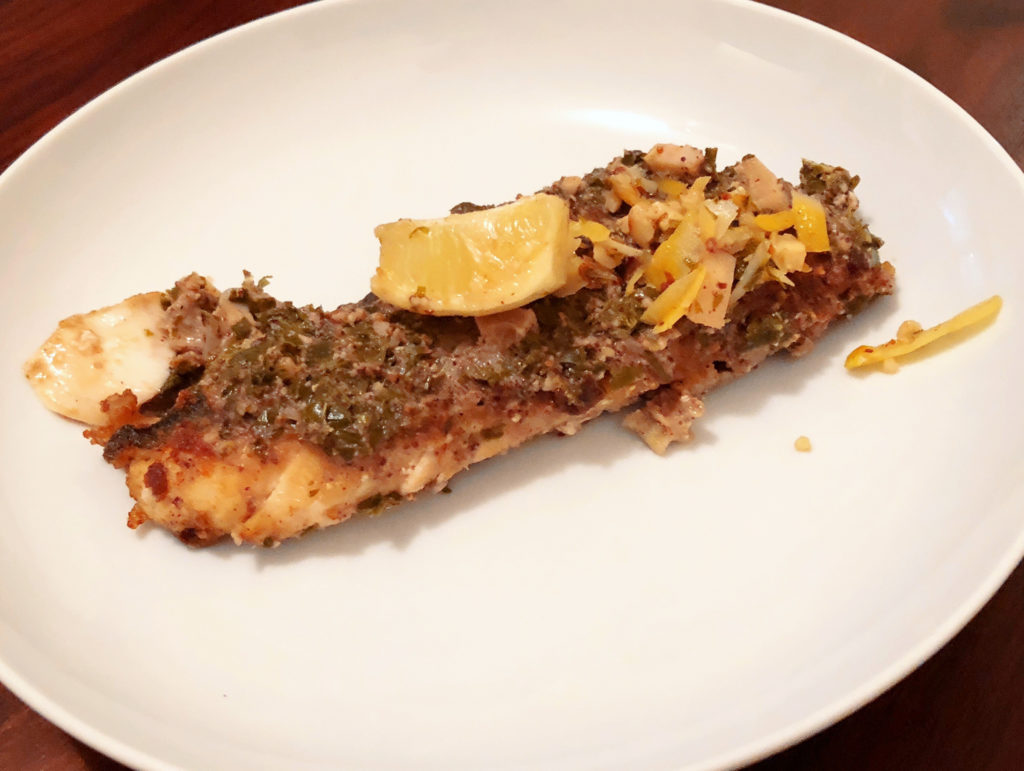
Tuniso-Andalusian fish cakes
For these 13th-century fish cakes, you need two meaty fish of your choosing (we opted for cod), which are boned, cleaned and mashed. The following are added to the mixture before kneading it into cakes: salt, pepper, cinnamon, ginger, mastic, cumin, saffron, dried coriander, onion juice, garlic, mint juice, murri (a fermented barley condiment which can be replaced with soya sauce), and oil. Serve with a tangy sauce made with garlic, vinegar, soya sauce and olive oil. [al-Tujibi, 2012, 199]
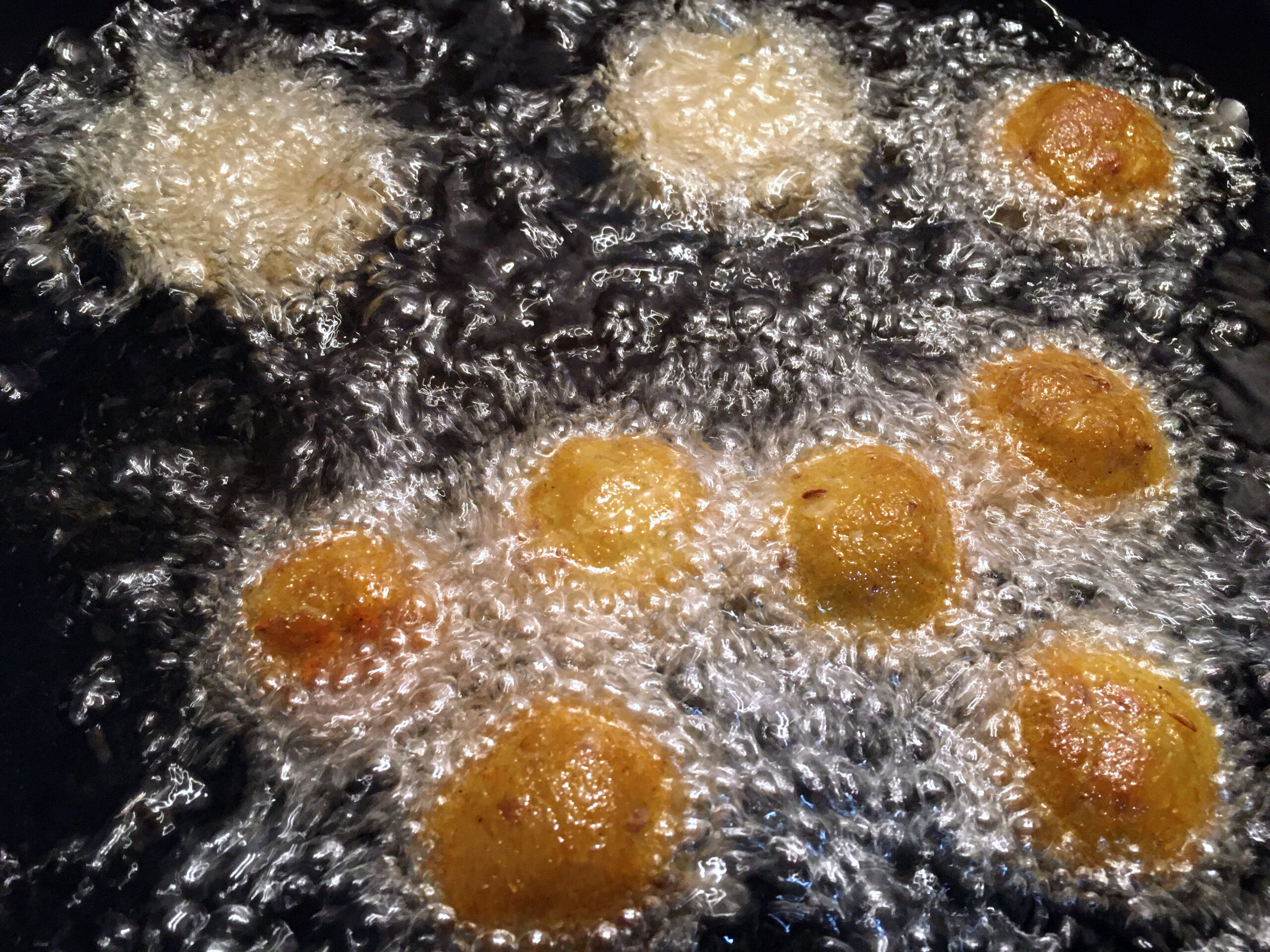
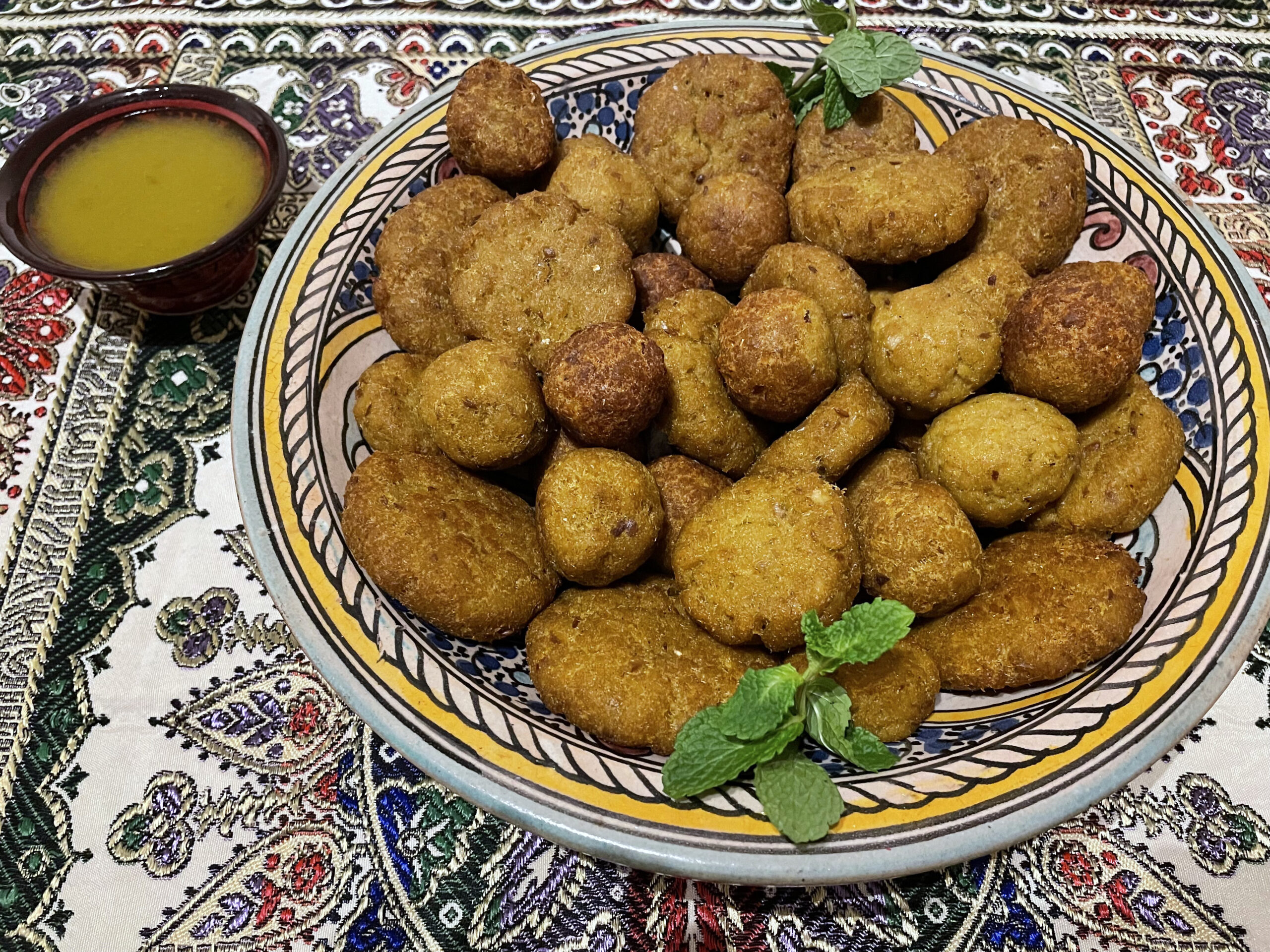
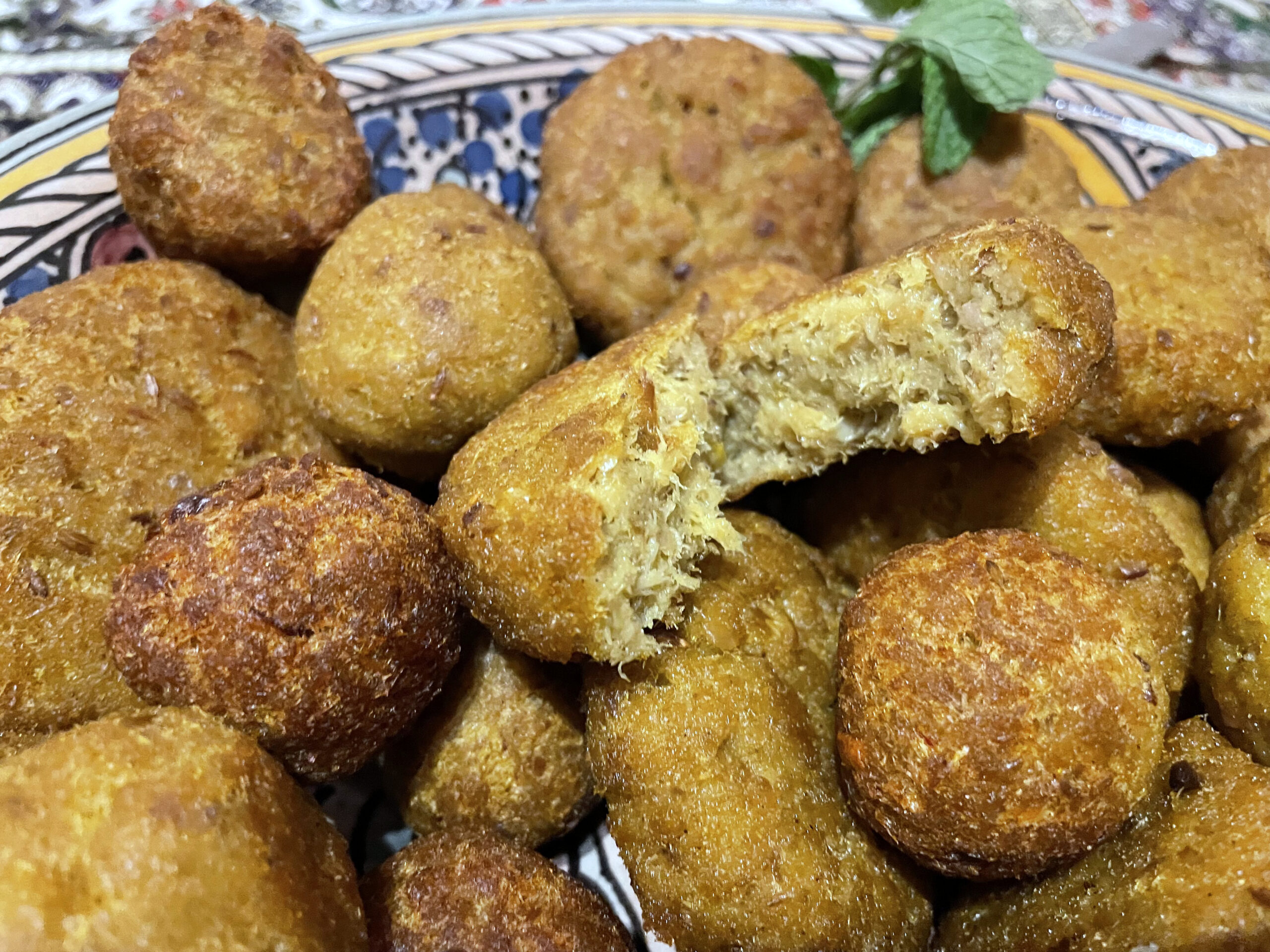
Cold vegetable and yoghurt dish
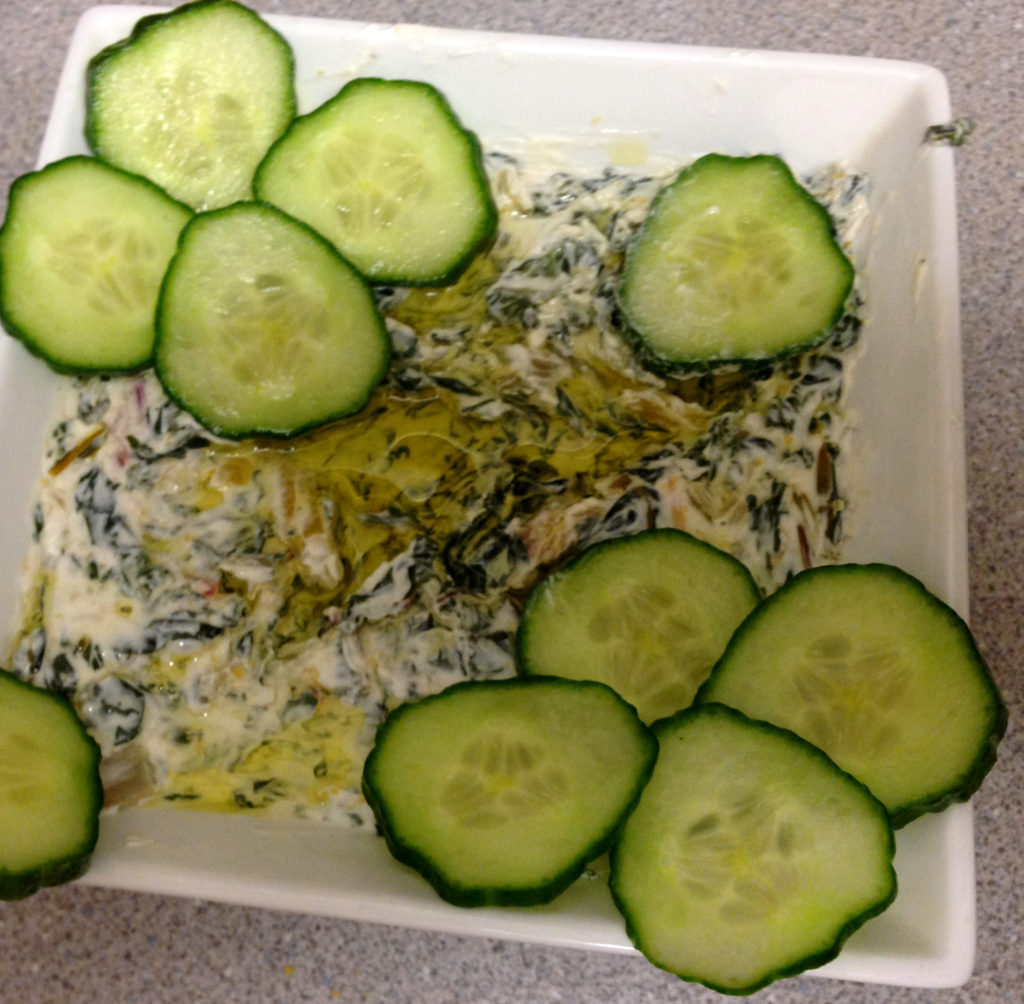
Andalusian cheese balls (مُجَبَّنة, mujabbana)
This was a speciality of the mediaeval Islamic west (al-Andalus, North Africa) and the cookbooks include quite a few recipes for mujabbanas, which were conspicuous by their absence from tables in the Near East. This 13th-century recipe requires flour, yeast and water to make a dough which is then shaped into balls and filled with cheese before deep frying in oil (though shallow frying also produces nice results). Don’t forget to drain them after removing them from the pan. They can also be turned into a sweet snack very easily through a generous dusting of sugar and cinnamon and with honey and rosewater for delicious dunking! There are a number of present-day descendants of the mujabbana, the most far-flung of which is probably the Brazilian pao de queijo.
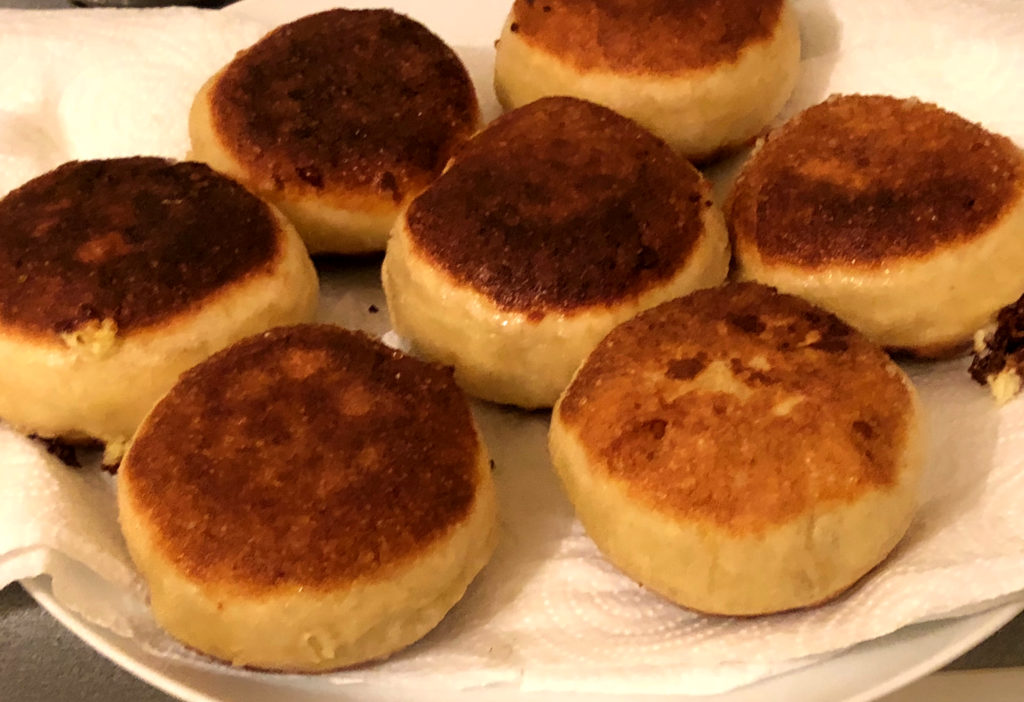
Aphrodisiac chicken
This is a dish not from one of the cookery books, but from a medical treatise on aphrodisiacs, written by the great astronomer al-Ṭūsī in the 13th century.
“Take some pullets; slaughter them; dry, wash and cut them up into slices. Sprinkle rock salt on the sides and grill on live coal, turning them over on each side until they are cooked. Then take five dirhams* of black cumin, three dirhams of goat’s beard, four dirhams of common ash and half a dirham of coconut. Pound all of these and sprinkle on the meat. This dish is eaten for supper. It strengthens the principal organs, increases innate heat, removes coldness from the back and loins, expels moistness and superfluities from the body, reddens the face, and purifies the blood. It also strengthens coitus to the extent that even when one has intercourse for three days running, one need not worry about growing weak. One is able to pleasure ten slave girls and freewomen every night, without any trouble or discomfort, as stated by the ancient philosophers and physicians.” (The Sultan’s Sex Potions, p. 103)
1 dirham = 3.125 g.
The Recipe
INgredients
- 1 plump chicken
- 1-2 teaspoons of rock salt
- 2.5 teaspoons of black cumin
- 1.5 teaspoons of desiccated goat’s beard (salsify)
- 1/2 teaspoon of common ash
- 3 teaspoons of desiccated coconut
method
- Cut the chicken into thin slices
- Mix the salt, cumin, salsify, common ash and coconut, and grind thoroughly with mortar and pestle
- Sprinkle the chicken with rock salt and grill on charcoal for 45 mins on each side
- Sprinkle the spice mixture on the cooked meat, and serve.
SERVING SUGGESTION
Eat with some rice and/or (Middle Eastern) flatbread (failing that, a foccacia would also be a great complement!).
Spiced drink (فُقّاع, fuqqa’)
A refreshing drink made with sugar dissolved in water, pomegranate seeds, hot bread, lime, and spices such as nutmeg, and musk. It is best when served cooled, with ice. The recreation relies on a recipe from the 15th century [Ibn Mubārak Shāh, fol. 22v.]

Apricot delight
This delicious dish is called mishmishiyya (مشمشية) and takes its name from the Arabic word for ‘apricot’, mishmish (مِشْمِش), and is already found in the oldest known Arabic cookery book, probably compiled in 10th-century Baghdad. However, the use of apricots in cooking goes back even further, to Assyrian times (18th c. BCE), where they were an ingredient in a bean stew — yummy! Fruit stews were very popular in medieval Arab cuisine and many other types (with apples, sour oranges, etc.) can be found in the cookery books. Interestingly enough, none of them has survived in present-day Arab cuisines.
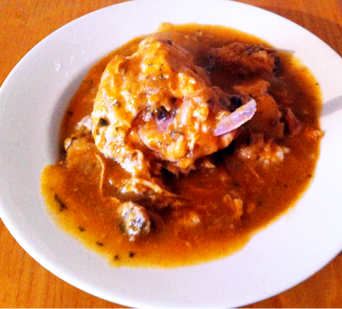
The Text
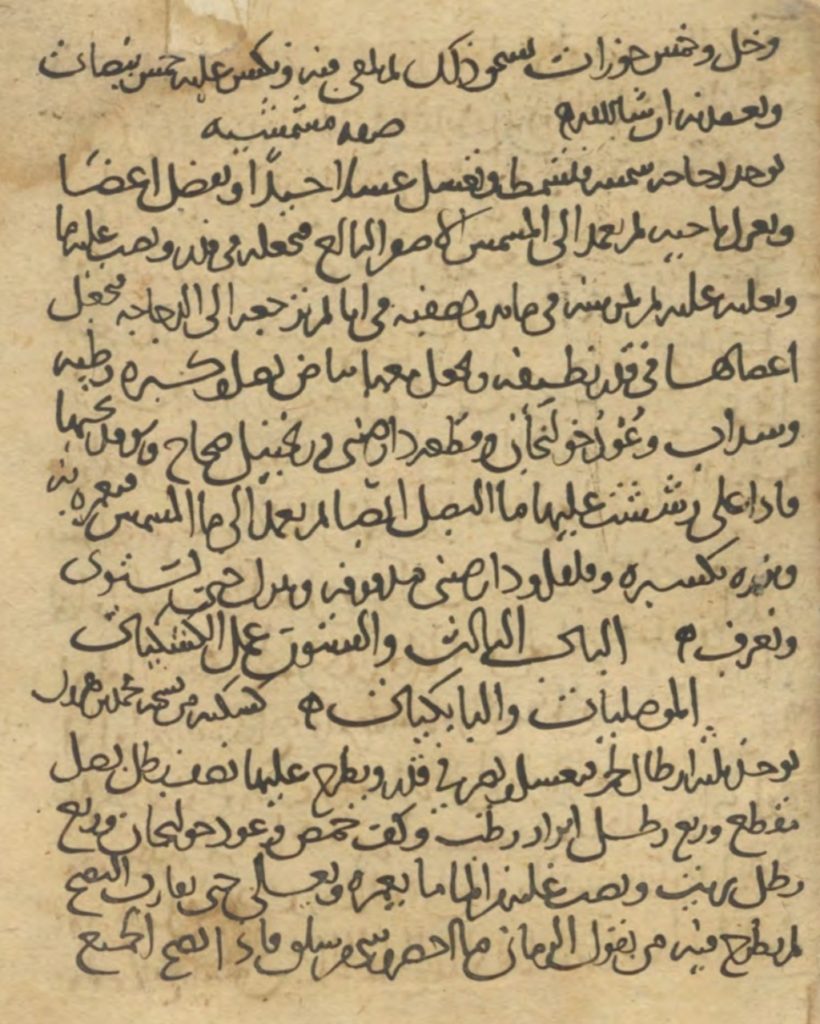
Translation
“Take a plump chicken, scald, clean and wash it very well. Joint and leave. Take ripe yellow apricots and put them in a pot. Pour water on them, and bring to a boil. Then mash the apricots and strain them into a container. Return to the chicken and put the pieces into a clean pot. Add the white of onions, fresh coriander, rue, a stick of galangal, a piece of cassia, and whole pieces of ginger. Then light a fire underneath it and when it is boiling, sprinkle onion juice over it as well. Add the apricots to the liquid [making sure] they are immersed. Season with ground coriander, pepper and cassia. Leave until [everything] is cooked, and serve.”
The Recipe
Ingredients
- 1 plump chicken
- 40 – 50 fresh ripe apricots
- 40g fresh coriander
- 4 small yellow onions
- 2 tablespoons of fresh ginger
- 2 tablespoons of fresh galangal
- 3 sticks of cassia/Chinese cinnamon
- 50g almond flour
- 2 teaspoons of ground coriander
- 1 teaspoon of ground black pepper
- 3 teaspoons of ground cinnamon
- 1 teaspoon of ground cumin
- 5 tablespoons of rose water
method
- Cut the apricots in half, remove the kernels and add to a large pot with 500 ml of hot water. Cook 10-15 minutes on a medium-high fire until soft. It helps to use a potato masher to mash the apricots while they are cooking as this will speed up the process – be careful to stir very often since they can burn somewhat easily.
- While the apricots are cooking, disjoint the chicken, and add to a separate, clean pot with 3 thinly sliced onions, the thinly sliced leaves of a 30g-bunch of cilantro, a whole two-inch piece of galangal and 70g fresh ginger cut into coins, a splash of water and a pinch of salt. Cook 10-12 minutes on medium-high fire and allow the chicken to cook and brown in its own juice.
- While everything is cooking, take one onion, chop it into small pieces and liquidate in a blender. Strain the mixture through a cheese cloth to get as much onion juice out of it as possible (this part is a little smelly!).
- Once the apricot mixture is ready, remove from the heat and allow to cool for a few minutes before blending with a hand blender.
- Pass the apricot liquid through a sieve and set aside. There will be a lot of fibre which you need to throw out, but don’t worry since you only need enough juice to cover the chicken in the pot.
- Add the onion juice to the pot with the chicken then add all but 1/3 cup of the apricot juice.
- Add ground coriander, black pepper, cinnamon and cumin to the pot and stir. Let the mixture simmer for 20-30 minutes until the chicken is cooked through.
- Add 50g almond flour to the apricot juice set aside previously, stir vigorously and add slowly to pot.
- When the dish is done, sprinkle rose water on top.
serving suggestion
This dish works wonderfully well with fresh rice, or with crusty bread. For improved results, the modern recipe was supplemented with elements from al-Baghdādī’s mishmishiyya (13th-c.), which also includes cumin, almond flour, and rosewater.
